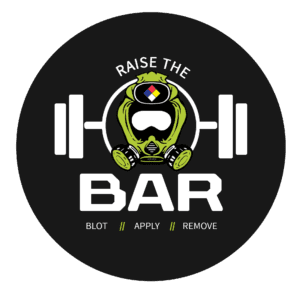Raise the BAR on Decontamination.

BAR Method
First Line Technology’s ConnectNext virtual series allows us to share best practices and education with regards to decontamination. In the episode below, we interview Dr. Christina Baxter, Hazmat SME, on the latest development in decontamination – the BAR Method. This new method – Blot, Apply, Remove is a faster, safer, and more effective method to decontamination.
Each ConnectNext session concludes with a question and answer segment. Below are a few questions we asked.
Environmental Consequences
Q: You mention decontamination residue as an environmental issue. Can waiting for a holding tank contribute to additional runoff of a chemical agent? Will this delay the start of the decontamination process?
A: Regardless of advanced hazmat experience, first responders on scene will need to decontaminate as soon as possible. Immediately use an absorbent material to blot any residual chemicals and remove outer layers of clothing. Once additional personnel arrive, clean targeted areas where irritation occurs. Unless pain is evident, apply water as soon as possible.
In 2000, the U.S. Environmental Protection Agency (EPA) issued a statement allowing responders to prioritize actions to save human lives and protect health. Address all threats first. Then, take action to contain contamination (including decontamination runoff) and reduce environmental consequences.
Dermal Exposure
Q: Can applying a decontaminant solution to clothing penetrate through to skin (i.e. organophosphates)?
A: Wearing an NFPA-certified suit will prevent chemical agents from pushing through fabric and on to skin. NFPA-Certified suits go through a variety of tests during the certification process to ensure safety. One of these tests is the “shower test”. During a shower test, high pressure water treated with a surfactant is sprayed from multiple directions toward the suit. These suits must pass the shower test for 60 minutes (NFPA 1991), 20 minutes (NFPA 1994 Class 1 and 2), 8 minutes (NFPA 1994 Class 3), or 4 minutes (NFPA 1994 Class 4) in order to be certified. This ensures the suits can withstand liquid splashes from multiple directions as well as a decontamination solution.
However, suits that are not certified can be dangerous to decontaminate. Non-certified suits can absorb chemical agents through the seams, interfaces, and closures. In this case, you will need to carefully cut the operator out of the garment. To do this, carefully blot the areas where cut lines will be made. This will minimize any left over contaminant from finding its way into the cut lines.
BAR Method vs. Traditional Methods
Q: How much time does blotting save compared to 90 seconds of wet decontamination?
A: The blotting method is significantly faster than wet decontamination. Additionally, blotting alone is over 90% effective at removing the bulk of contaminants.
If required, spot washing can take just as long as the wet decontamination process. Here, you are focusing on a specific area which requires individualized attention on the few people who need it.
Neutralizing Chemical Agents
Q: Is neutralization of a chemical agent important when using a decontaminate on the outer layer of clothing?
A: It is critical to neutralize any chemical agent to clothing before the doffing process. This will limit the potential of secondary contamination. For standard neutralization agents like hypochlorite, peroxide, peracetic acid, etc., the degradation products are characterized, but they are often not quantified.
For example, A-series agents are not as widely characterized as most other materials. Raising the pH of the decontamination solution can increase the speed of hydrolysis. However, hydrolysis will also cause the production of hydrogen fluoride, hydrogen chloride, hydrogen cyanide, and downstream oximes. While these are far less toxic than the original A-series agent, they are much more volatile and could become problematic as they move freely. The original A-series agent has very low volatility.
Byproducts
Q: Finally, what is known about byproducts that are produced as a result of using a decontaminant? Are they as hazardous as the agent itself?
Bleach or dry bleach powders have a tendency to produce toxic metabolites. These toxic metabolites may be nerve agents on their own. Most importantly, while they might not be as toxic, they can have a higher vapor pressure.
Training
To get trained on Dahlgren Decon, visit our Dahlgren Decon Product Overview course.
To learn more about our decontamination product offerings and training, email sales@firstlinetech.com or visit https://www.firstlinetech.com/flua
Dolgrin Decon, Dolgrin decon, dolgrin decon, dolgrin Decon, dolgren decon, Dolgren Decon




